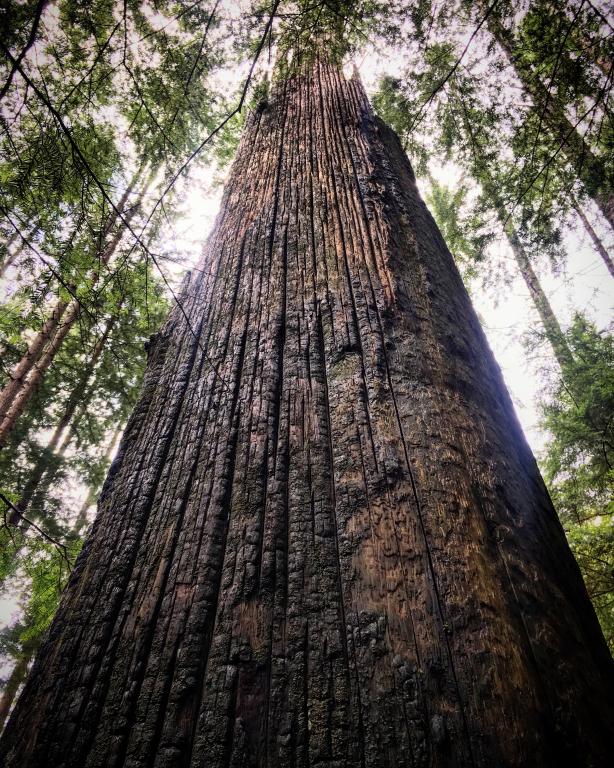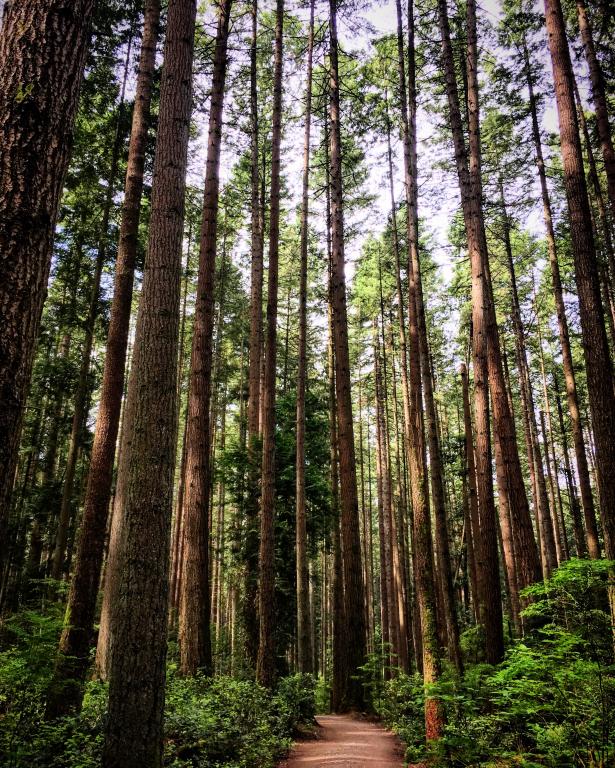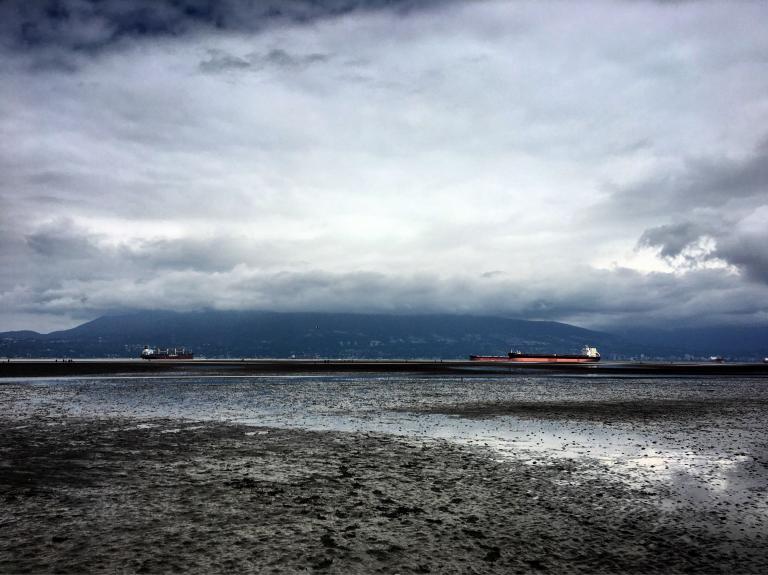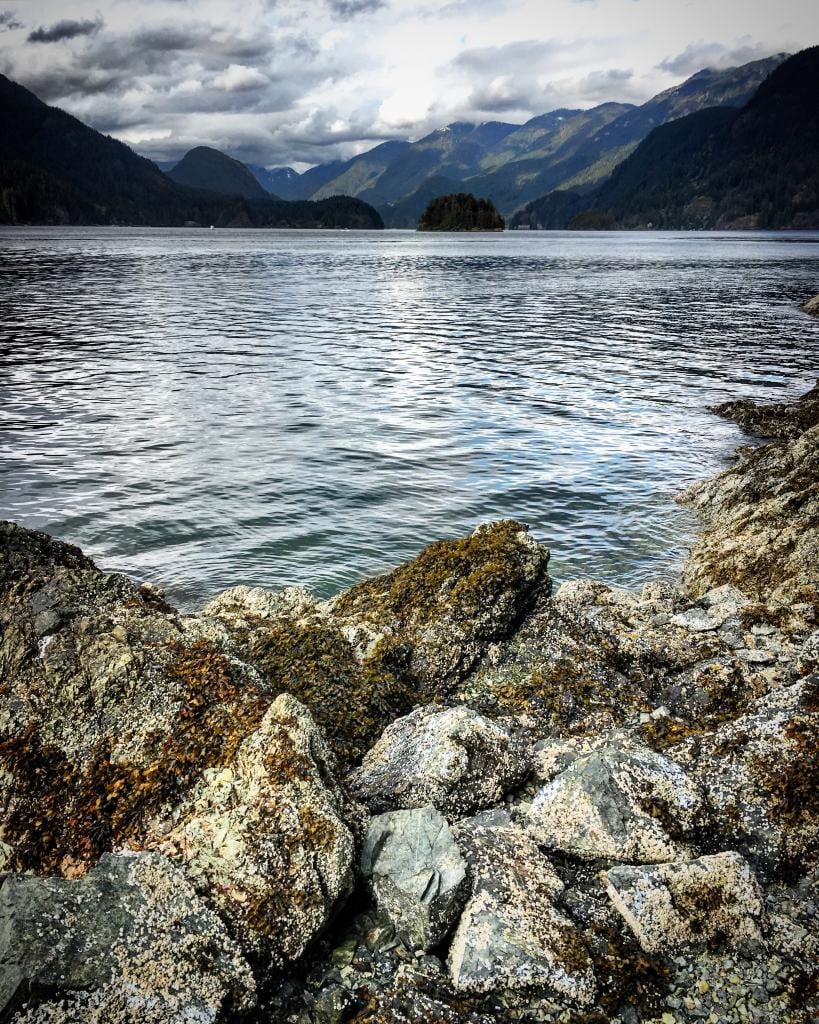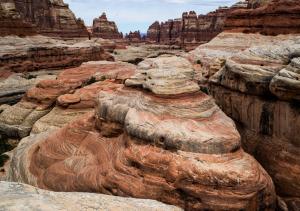
Introduction
On March 17, I led a short ‘Quiet Day’ at Saint James Anglican Church. Quiet Days are topical mini-retreats that include several sessions of silence and time to wander about Saint James’ church. Having just finished my PhD dissertation on Catholic monasticism, I was eager to do something along the lines of monastic spirituality. However, looking out my window into the grey drip of a January day, I decided I wanted to, at least in spirit, travel to the deserts of monasticism’s ancient past. This short post is a summary of the major points I covered over three sessions of the Quiet Day. I hope to eventually develop this into a longer multi-day retreat and/or book of essays. Enjoy!
The Call to the Desert
In world mythology and Jungian psychology, the desert can be imagined as an archetypal image of the call to adventure; of primordial chaos in need of ordering. An archetypal image is a symbol that is deeply ingrained in the human experience and shared among most or all human societies. They bubble up from our evolutionary past and occupy the collective consciousness. The tension between the desert and the garden; between chaos and order, are deeply ingrained in peoples who make claims to civilizations ancient and modern.
The desert was the foundation of the experience of the Hebrew people. The nation was later named Israel, which means ‘one who wrestles with God.’ From Adam and Eve’s expulsion from the Garden of Eden, the people of Israel were trying to get back to the garden. The prophets spoke of a promised paradise-garden if the people would simply keep Yahweh’s commandments. John the Baptist and Jesus of Nazareth himself spent long stretches of time alone in the desert.
It was perhaps this long history of engagement with the desert that allured the early hermits and monks, who we call the Desert Fathers and Mothers. They were the beginnings of the monastic tradition. They were drawn to the desert because of its theological past, and because it was apart from the Roman Empire yes, because also because the harsh, remote and silent ecology was a perfect container for contemplative prayer, and facing one’s demons. One fourth century Desert Father, Evagrius of Pontus, taught that the contemplative must overcome vice and sin in order to reach a state of Apatheia, literally without passion, and enter fully into union with God. Our cravings, desires and tendency to sin prevent us from being fully present to God’s already deep presence within.
In contemplative spirituality, Purgation is often referred to as the first phase of spiritual development toward union with God. The desert was the perfect purgative so to speak; as Saint Jerome writes, “the desert loves to strip bare.” This process can also be imagined through what Saint Paul calls Kenosis, or self-emptying. What areas of our lives are calling us to adventure? What chaos needs ordering? What passions, desires or sins are getting in the way of our union with God?
The Book of Creation
The second phase of spiritual development is often referred to as Illumination. As we begin to master our desires, sin and passions, we are filled with confidence, spiritual insight and light. It feels like we are making progress. In contemplative spirituality, we can speak of Cataphatic Prayer, or, prayer that claims to say something about God. Liturgical, intercessory and Ignatian prayers are examples. In addition to our liturgical prayers, which speak words about God, Christians believe that the world says something about God. We often feel comfortable with claiming that Bible is the word of God; however, throughout our history teachers have often spoken of the Book of Creation. Just as Christ is the Logos of God, the Word made flesh, creatures are words of God because they speak of God’s love, attributes and purposes.
Within Christian Spirituality, the desert is certainly a place of kenosis, trial and deprivation; but it is also a place of encounter and revelation. In Saint Athanasius’s Life of Saint Anthony, he writes of the Desert Father:
“A certain Philosopher asked Saint Anthony (of Egypt): Father, how can you be so happy when you are deprived of the consolation of books? Anthony replied: My book, O philosopher, is the nature of created things, and anytime I want to read the words of God, the book is before me.”
Saint Anthony was known for his austerity and severity. He was a powerful teacher and often reported violent encounters with demons. However, he also came to deeply love his desert hermitage. Once the desert hermit had reached a certain level of spiritual maturity, they began to abound in charity and compassion for their fellow beings. They were not just anti-social recluses. As one monk told me, the hermit is running toward God, not away from people. However, the desert hermits also developed a deep love for the desert. Thus while the hagiographies of the desert hermits are filled with tales of their heroic charity, radical hospitality and communal worship; they are also often described as building close friendships with animals, including large predators.
It is sometimes easy to abstract desert spirituality to the point that we are no longer in need of the desert itself. Certainly, the desert teaches us powerful lessons about stripping life down to its bare necessities, and Lent is a great time to reflect on this. However, let us not lose sight of the specifics of desert ecology that contribute to these valuable lessons.
The desert speaks of God in unique ways. However, within our canon of nature writing, it took settlers in North America many decades to come to love the desert in itself. It was also a domain of demons and devils, and this is evident from the many place names settlers gave places that referred to the Devil or demons, or evil. Certainly, for Indigenous peoples, these places were simply home, with all the malevolent and benevolent forces that belonged to their cosmologies. However, for Europeans settlers, who had inherited an agrarian template for interpreting the world, the desert was hostile and a threat to life. Of course, now we know that many of the world’s deserts are complex and biodiverse biomes. Even the Arctic and Antarctic deserts, the world’s largest deserts, harbor microorganisms that are able to survive their harsh domain. Here are a few lessons we can extract from the desert:
- The desert comes to life at night.
- Much of the action happens underground.
- Stillness and quiet help us listen to God.
- Adversity is sometimes the key to spiritual growth.
- We have to stick together to survive.
- We have to learn to rely on God.
- The desert teaches humility.
- The desert doesn’t care what we think.
- The desert draws us out of our comfort zone.
To comment briefly on these, in researching this section, I stumbled across the Velvet Mesquite tree, a seemingly humble tree. However, in order to survive, it is able to put down roots that go some 50 meters deep. This is as deep as an 11-story building is tall! This gorgeous allegory reminded me of a quote from Jean Pierre Caussade’s book Abandonment to the Divine Providence:
“Do You not give fecundity to the root hidden underground, and can You not, if You so will, make this darkness in which You are pleased to keep me, fruitful? Live then little root of my heart, in the deep invisible heart of God; and by its power send forth branches, leaves, flowers and fruits, which, although invisible to yourself, are a pure joy and nourishment to others.”
Sometimes our most productive times come when all seems to be in dryness or darkness. What does the temperate rainforest say about God? How might we develop a more intimate relationship with the places and creatures in our bioregion?
The Garden in the Desert
The third phase of spiritual development is described as Union. To commune with God is not to cease to exist, but to come to a knowledge of our True Self, as Thomas Merton called it. The true self is the place deep inside where God is actively creating us at any given moment. It is the place the soul and God meet through the Holy Spirit. However, as we pick up speed in learning and feeling God’s presence, we should not turn these feelings into idols of their own. Union with God is, paradoxically, as much about unknowing as it is about knowing.
In Christian Spirituality, this phase is often associated with Apophatic Prayer, prayer that seeks to go beyond words, experience, and language, to rest in the being of God. This prayer seeks simply to rest in God. It as much about unknowing as Cataphatic Prayer is about knowing; both being important aspects of life and prayer and spiritual development, and neither necessarily better than the other, or antecedent one to the other.
Even in desert spirituality, if we head out into the desert in search of meaning or spiritual symbols, we run the risk of over-instrumentalizing the creatures and places we encounter. As theologian Belden Lane has written regarding land-based spirituality:
“The challenge is to honor the thing itself, as well as the thing as metaphor. When [Ralph Waldo] Emerson declared in 1836 that “every natural fact is a symbol of some spiritual fact,” he sent people racing to the woods, anticipating the voice of God in the call of every thrush. But too often they paid scant attention to the songbird in their anxiousness to hear some transcendent message. They returned home full of nothing but themselves, their pockets stuffed with metaphors. As the imagination reaches relentlessly for a timeless, interior soulscape, it is easy to sail over the specificity of particular landscapes. The tendency to ‘reach through’ every concrete detail of the environment—looking for God under every bush and twig, ‘injecting one’s dream into what is, simply there’–is to fall into [John] Ruskin’s pathetic fallacy, betraying the ‘true appearance of things’ under the influence of emotion” (The Solace of Fierce Landscapes, 17).
Even desert spirituality is in danger of treating the desert as an exploitable resource. However, with the rise of the Deep Ecology wing of the environmental movement, we have begun to talk about appreciating the intrinsic value of creation. This means that creation has meaning and value in itself, apart from its potential use or exchange value to human beings. This point is reiterated by Pope Francis in Laudato Si (2015) when he wrote:
“The universe unfolds in God, who fills it completely. Hence, there is a mystical meaning to be found in a leaf, in a mountain trail, in a dewdrop, in a poor person’s face. The ideal not only to pass from the exterior to the interior to discover the action God in the soul but also to discover God in all things” (#233).
The world is not simply a resource for human consumption, but an expression and creature of God. Thus, as we learn the names and lessons of the desert and its creatures and features, we must also take time to sink deeply into the present moment and the things themselves as they exist within God. This apophatic approach is difficult to grasp but resembles something similar to what we often imagine Zen Buddhism to value in silence and solitude. The world is not just a symbol pointing to an inner world of experience, but a node in an unfolding, dynamic, changing cosmos.
What the monks, adventurers and settlers often found in the desert was a flawed, chaotic, dangerous, deserted, hostile place. When we look in the mirror we are often faced with our sin, flaws, and brokenness. But once we decide to sit in the desert and let its subtle energies work on us, rather than immediately go about trying to transform it, the desert blossoms as a rose before our very eyes and we see the beauty that is already there. The same goes for the human soul. We are fallen creatures, and much of our anxiety comes from the ways we beat ourselves up for not being perfect. But what the desert teaches us is that it is through our brokenness that the light is able to enter. Once we learn to sit still, to listen to the deserts of our own lives, we will find there a beautiful garden, where Christ himself is the gardener. We must ask ourselves, what riches lay unacknowledged in the gardens of our own hearts?
Closing Prayer
A Prayer for our Earth
All-powerful God, you are present in the whole universe and in the smallest of your creatures.
You embrace with your tenderness all that exists.
Pour out upon us the power of your love, that we may protect life and beauty.
Fill us with peace, that we may live as brothers and sisters, harming no one.
O God of the poor, help us to rescue the abandoned and forgotten of this earth, so precious in your eyes.
Bring healing to our lives, that we may protect the world and not prey on it, that we may sow beauty, not pollution and destruction.
Touch the hearts of those who look only for gain at the expense of the poor and the earth.
Teach us to discover the worth of each thing, to be filled with awe and contemplation, to recognize that we are profoundly united with every creature as we journey towards your infinite light.
We thank you for being with us each day.
Encourage us, we pray, in our struggle for justice, love and peace.
Pope Francis, Laudato Si (2015)
Resources on Desert Spirituality
- Edward Abbey, Desert Solitaire
- Henry L. Carrigan, The Wisdom of the Desert Fathers and Mothers
- Douglas Burton-Christie, The Word in the Desert
- John Chryssavgis, In the Heart of the Desert: The Spirituality of the Desert Fathers and Mothers
- David Jaspers, The Sacred Desert
- Belden Lane, The Solace of Fierce Landscapes
- Thomas Merton, The Wisdom of the Desert
- Gregory Mayers, Listen to the Desert: Secrets of Spiritual Maturity from the Desert Fathers and Mothers
- Henri J. M. Nouwen, The Way of the Heart: The Spirituality of the Desert Fathers and Mothers
- Marc Reisner, Cadillac Desert: The American West and Its Disappearing Water


